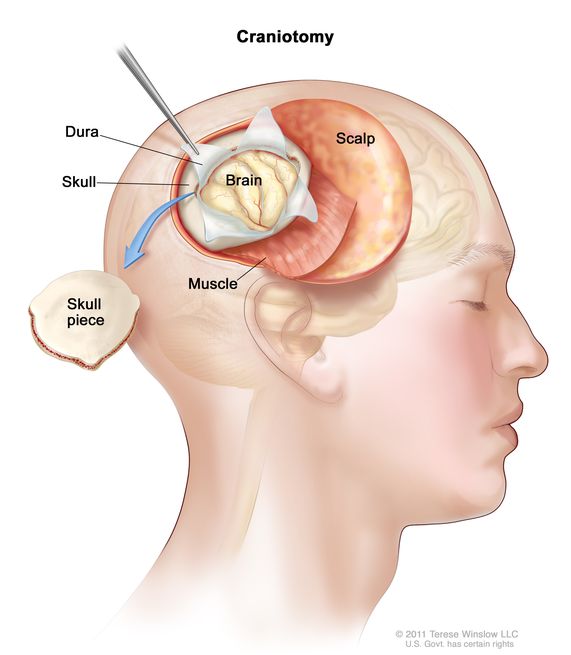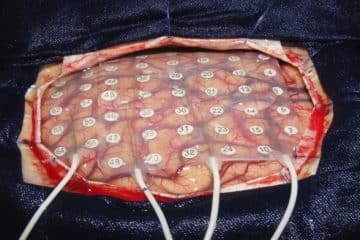Craniotomy is a surgical procedure in which a section of the skull, known as bone flap is removed to access the brain and then replaced after the surgery. Craniotomy is carried out to treat medical conditions such as tumors, blood clots, traumatic brain injury and to remove foreign bodies, e.g bullets.
Craniotomy differs from craniectomy in which the bone flap is not immediately replaced.

Reasons for Craniotomy Surgery
- The procedure is done for various including:
- Diagnosing, removing, or treating brain tumors
- Clipping or repairing of an aneurysm
- Removing blood or blood clots from a leaking blood vessel
- Removing an arteriovenous malformation (AVM) or addressing an arteriovenous fistula (AVF)
- Draining a brain abscess, which is an infected pus-filled pocket
- Repairing skull fractures
- Repairing a tear in the membrane lining the brain (dura mater)
- Relieving pressure within the brain (intracranial pressure) by removing damaged or swollen areas of the brain that may be caused by traumatic injury or stroke
- Treating epilepsy
- Implanting stimulator devices to treat movement disorders such as Parkinson’s disease or dystonia (a type of movement disorder)
Craniotomy Procedure
The operations is usually performed under general anesthesia hence the patient is asleep during the procedure; occasionally it is done under local anesthesia and does not involve significant discomfort for the patient.
Generally, craniotomy will be preceded by magnetic resonance imaging [MRI] or computerized tomography [CT] scans to reach the precise location within the brain that is to be treated. This technique requires the use of a frame placed onto the skull or a frameless system using superficially placed markers or landmarks on the scalp.
The amount of skull that needs to be removed depends on the type of surgery being performed. The bone flap is mostly removed with the help of a cranial drill and a craniotome, then replaced using titanium plates and screws or another form of fixation (wire, suture, etc.) after completion of the surgical procedure.
Craniotomy Risks and Complications
As with any surgical procedure, complications may occur. These include:
- Infection – There is risk of infections such as bacterial meningitis or viral meningitis. At least 40% of patients became susceptible to at least one infection, creating more interconnected risk factors along the way. From the Infectious Diseases Clinic Erasme Hospital, there had been reports of infections initially beginning from either the time of surgery, skin intrusion, hematogenous seeding, or retrograde infections.
- Bleeding – There is also risk of hemorrhage (excessive bleeding) with the procedure. Nerves and blood vessels in the brain may be damaged during surgery.
- Pain – After craniotomy procedure, pain is frequent and moderate to severe in nature. This pain has been controlled through the use of scalp infiltrations, nerve scalp blocks, parecoxib, and morphine, morphine being the most effective in providing analgesia.
- Seizures
- Brain swelling
Craniotomy Recovery
The patient may feel fatigue for several weeks after surgery. Also, there may be headaches or problems concentrating. It can take 4 to 8 weeks to recover from surgery.
The cuts (incisions) may be sore for about 5 days after surgery. As the wound starts to heal, it may begin to itch. Medicines and ice packs can help with headaches, pain, swelling, and itching.
The stitches that hold your incisions together may go away on their own or will be removed in 7 to 10 days. This depends on the type of stitches the doctor uses.
Craniotomy Cost
The total cost for craniotomy surgery depends on a lot of factors such as the anesthetic fee, private hospital fee, private operating facility fee, extent of surgery required. The total cost of the procedure is around $4800 – $6000.
More: Sleep Apnea Surgery
